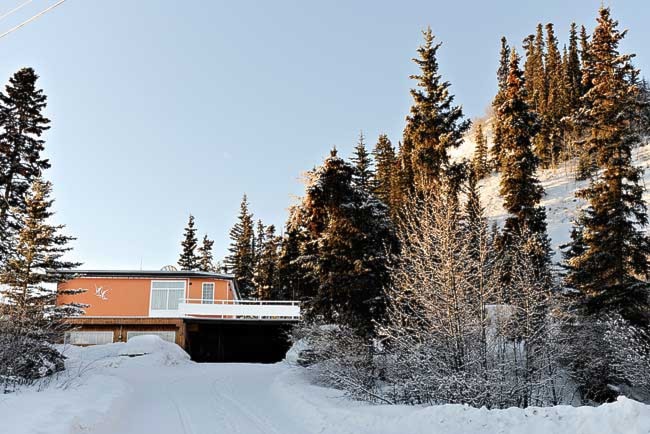A rezoning application has opened 40-year-old wounds within Whitehorse.
Up until the early ‘70s, Clare Stark had a great view from her house perched on the clay cliff escarpment overlooking the Yukon River.
And at a time when grass was scarce in town, her lawn was a beautiful green.
One morning, as she was running out the door to work, Stark learned, from a radio report that her home would be expropriated. “There was no choice,” she says. “We were told we had three years to get out.”
At that time, housing was harder to come by than it is now.
Her rock-and-log house, with its great lawn, was bulldozed along with many of her neighbours’ homes.
Stark had to move into an apartment.
“We all sort of left around the same time,” she says. “Except the ones that never moved.”
The Wienecke’s were among those few.
They refused to relocate and now they are demanding city council rezone their property.
The initial expropriation was done because the city deemed the escarpment unsafe.
“In the spring time, when it was melting, you could hear the mud slide down,” says Ruth Whitney, another former resident of the little, cliff-top neighbourhood. “And you could go back there and see where the mud had come down.”
One hundred and thirty properties were supposed to be expropriated and the federal, territorial and municipal governments gathered a $2-million fund to do it, says Robert Fendrick, the city’s director of administrative services.
Some residents were bought out at high market value and given relocation money.
Others lived out their life-estate leases. And still others waited until after the $2 million had run out and were paid from the landbank reserve, says Fendrick.
Once the city took back the land, the houses were bulldozed to the ground to stave off any future development, Fendrick says.
But the Wienecke’s stayed put.
At that time, their lot was outside the immediate danger zone, says Fendrick.
In 2002, the city had a geohazard risk study done of the escarpment and it mapped out high, medium and low hazard zones. Any activity within them is supposed to be restricted to recreation and trails. The study prohibits any building in the high-hazard zone and says anything in the medium-hazard zone must undergo arduous studies and mitigation techniques. The city’s newest Official Community Plan recommends nothing be built within 60 metres of the escarpment.
The area was rezoned “PE” for environmental protection.
The Wienecke residence is only 20 metres back and straddles the high and medium hazard zones.
Now, led by daughter Tamara Goeppel, the family is demanding their property be rezoned as “RD1,” residential downtown.
Under the “PE” zoning, the property has literally no market value.
Goeppel paid for her own slope-stability assessment, specifically for her parents’ lot.
Because no further development has happened on top of the escarpment and because the house has already been there for 50 years, Goeppel’s study suggests that with a few mitigation techniques the residence is safe, Fendrick says.
“If somebody asked me which would be the most unsafe, it would have been his,” says Stark about the Wienecke’s house. “His fence is hanging in mid-air. How can you say that’s stable?”
Stark describes how the Wienecke’s house is up farther, above the residences that were bulldozed, and that sloughing has already left parts of the Wienecke’s front fence dangling.
“There should have been no excuses, no exceptions,” she says. “We followed the law and had to move out.”
Today, not only have the Wienecke’s had the pleasure of staying in their home for the past 30 years, but the market provides a whole new ball game to play in, with much bigger numbers, she adds.
With that said, Stark isn’t looking for money.
Even if she were, she wouldn’t get it, says Fendrick.
“Although, we are looking back at the title and how things were transacted in the past,” he says. “We’re not really looking at redressing any 30-year-old agreements that have been made. As far as we’re concerned, those are completely done and legal.”
But Stark stresses that those who did move 30 years ago were not treated fairly.
“I can acknowledge that some people don’t think it’s fair, but it’s a simple rezoning application before us now,” says Fendrick.
Stark remembers the numerous bedrooms in her old home and her vegetable gardens outside.
“It was a nice place. I’d move back into it tomorrow,” she says. “It’s just opening up a whole bunch of wounds again. It comes up every once in a while, especially when you drive by there and you think, ‘Well, my yard is still there with all the vegetation. The house is gone. And Wienecke’s still up above there.’ Why did we follow the rules and some people were exempt from them? That’s the part I don’t get.”
Stark’s home was number 605 Drury Street. The Wienecke’s are at number 609.
City council has deferred second and third reading of Goeppel’s application for rezoning until February 14.
Contact Roxanne Stasyszyn at
roxannes@yukon-news.com
